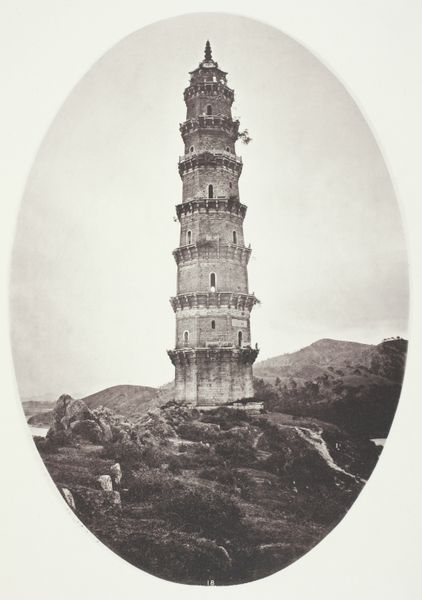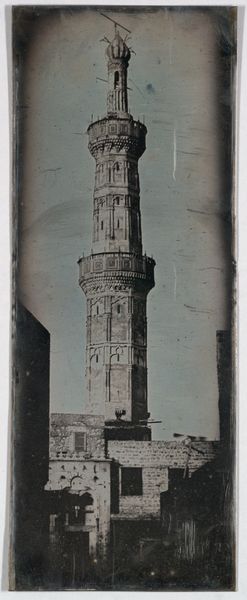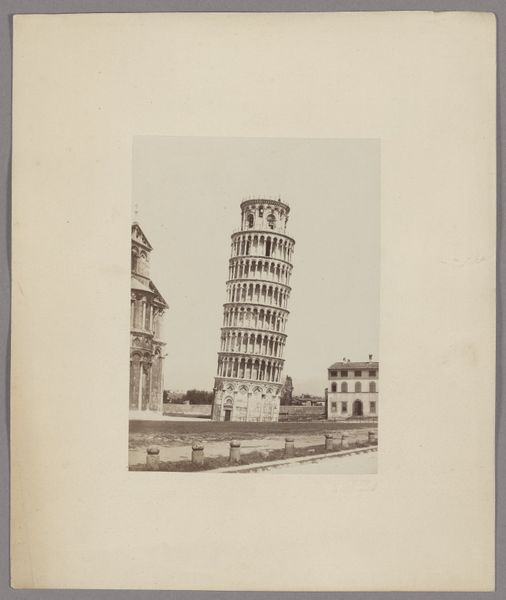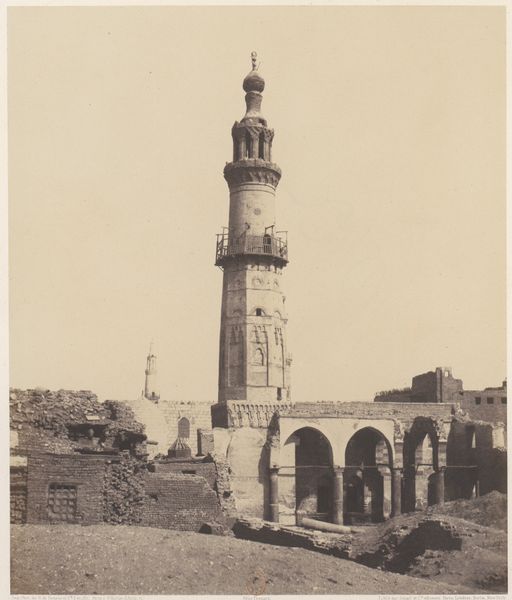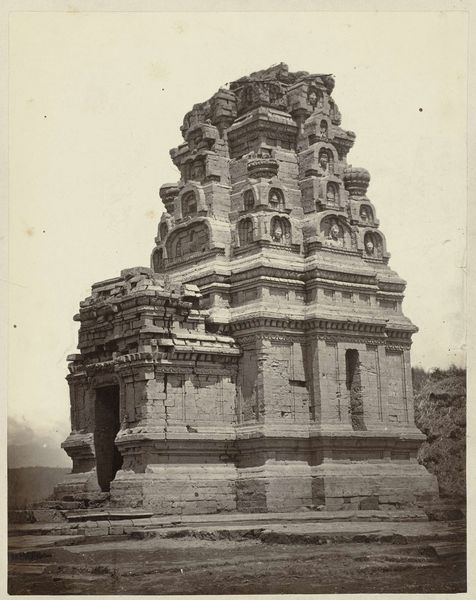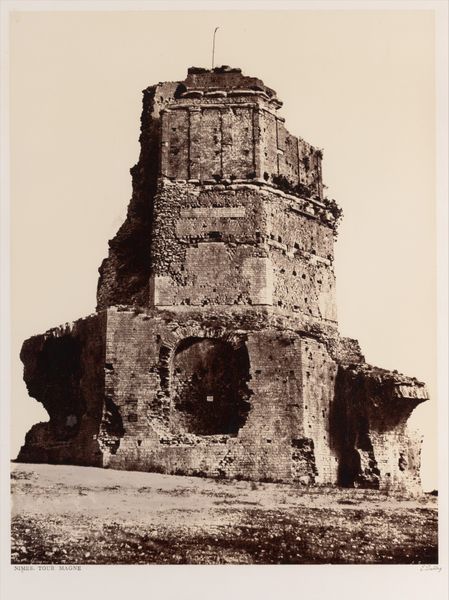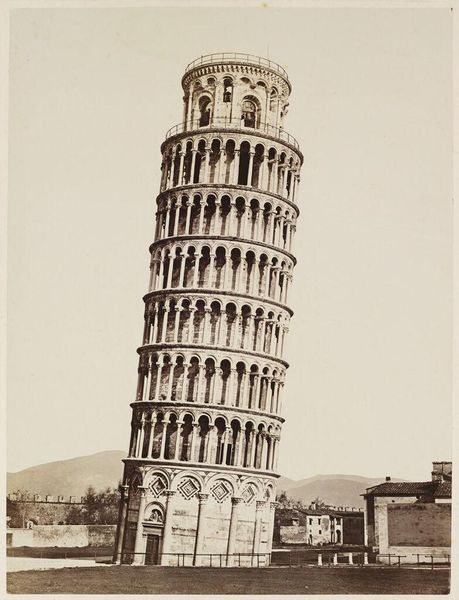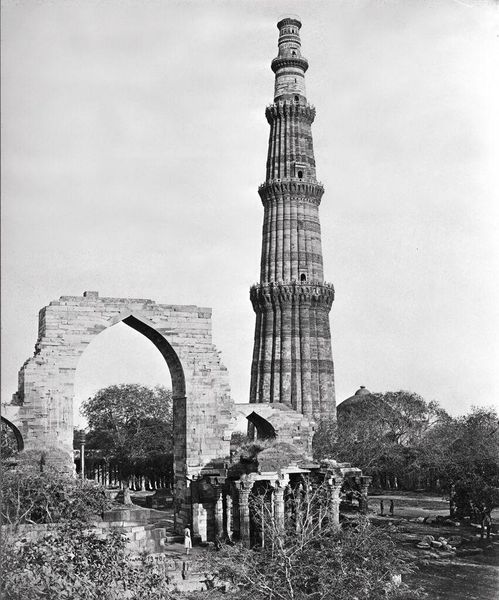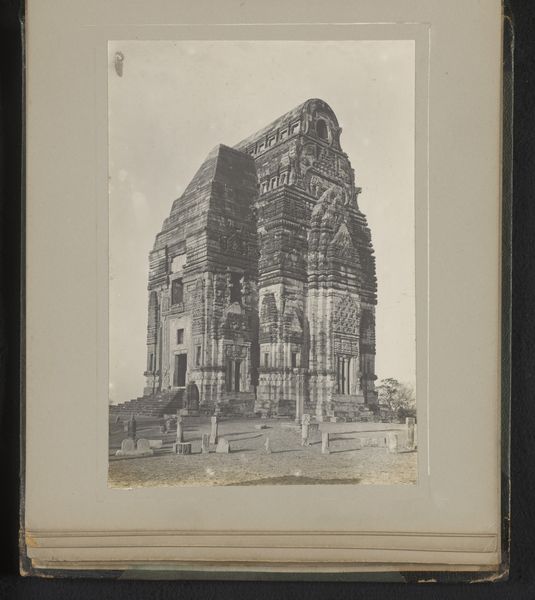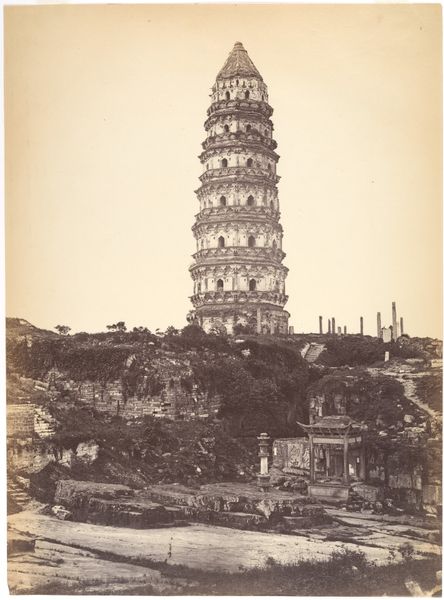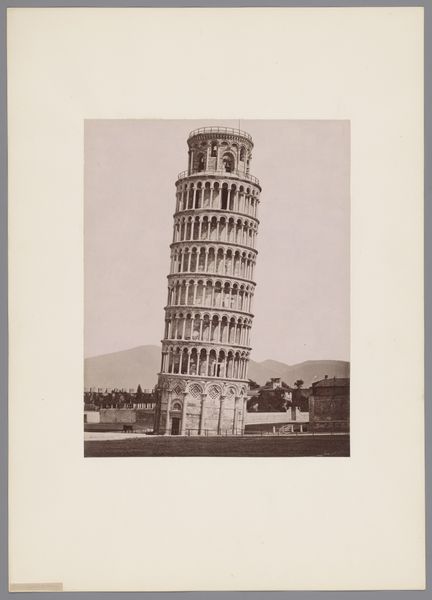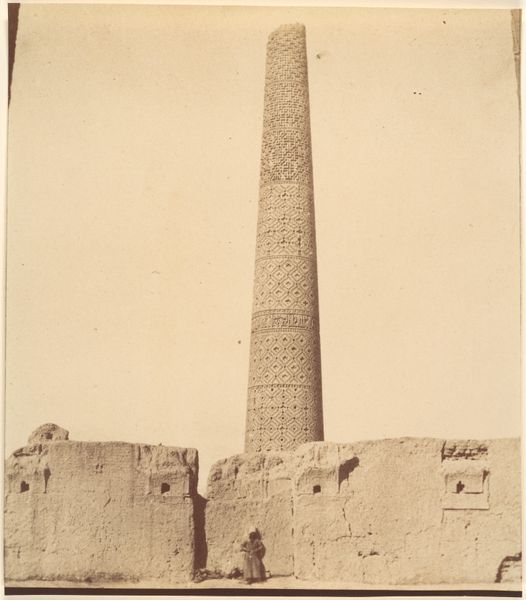
print, photography, architecture
# print
#
landscape
#
photography
#
historical photography
#
islamic-art
#
architecture
Dimensions: height 290 mm, width 234 mm
Copyright: Rijks Museum: Open Domain
Editor: So, here we have Samuel Bourne’s photograph, “The First Gallery of the Qutb Minar in Delhi, India,” taken between 1863 and 1866. Looking at the architecture, I’m struck by how the ornamentation and detail become more intense as the tower rises. It feels very purposeful. How do you read this photograph, especially considering its historical context? Curator: It's important to consider Bourne’s role as a commercial photographer working in British India. Images like these were consumed in Britain, shaping perceptions of the ‘exotic’ East. The Qutb Minar itself, a symbol of Islamic rule, is being presented through a colonial lens. Does Bourne’s approach feel neutral to you, or does his perspective as a British photographer influence how the Minar is presented? Editor: I see what you mean. There's a stillness, an almost detached observation. I guess I had assumed his intentions were purely documentary. It’s interesting to think about how the British public might have understood this image at the time, viewing the Qutb Minar as evidence of a grand, yet conquered, past. Curator: Exactly. And think about who commissioned and consumed these photographs. They weren't meant for local consumption in India; they were tools in constructing a narrative of British power and influence. The aesthetics might seem objective, but the choice of subject, framing, and distribution all played a part in shaping a political landscape. Editor: This makes me realize how photographs are never really neutral documents, and the power dynamics inherent in colonial relationships significantly influenced artistic production, even in something that appears to be straightforward architectural photography. I will consider context more carefully moving forward. Curator: Precisely! Understanding the market and the mechanisms through which images circulate is vital to analyzing any work of art, especially those made within or about a colonial context. It provides us with the chance to analyze and comprehend art, not only from the artist's viewpoint, but through the public’s understanding of it.
Comments
No comments
Be the first to comment and join the conversation on the ultimate creative platform.
